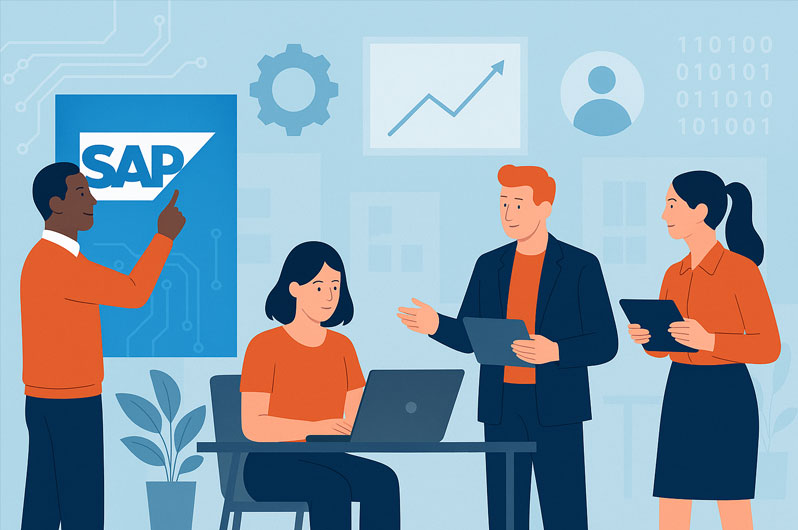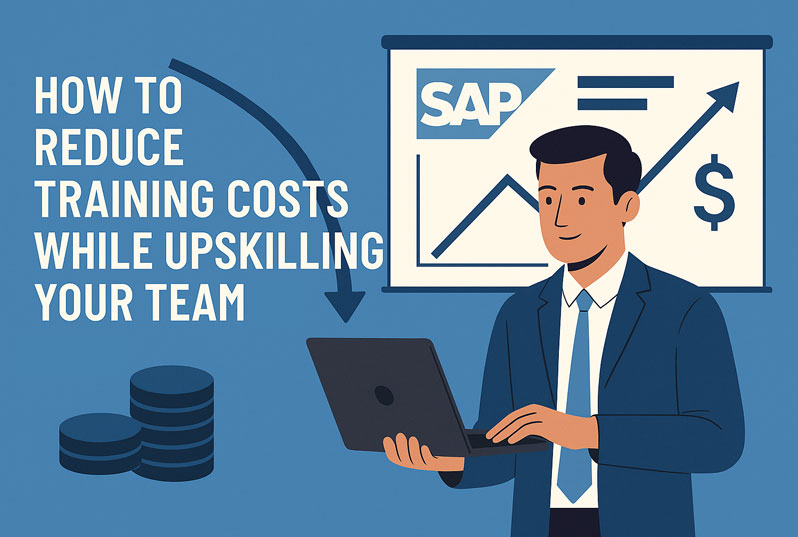How to Build an SAP Training Program for Your Company
by Michael Management

Building an SAP training program is not just about onboarding users. It is about enabling long-term performance, reducing system errors, and maximizing your software investment. Whether you're starting from scratch or updating an existing program, the right framework can make all the difference.
In this quick guide, we’ll walk through the key steps to build an SAP training program that boosts adoption, supports business growth & keeps your team sharp.
Start with a Skill Gap Assessment
First and foremost, you have to figure out where the gaps are. An effective SAP training program starts with a comprehensive internal skills evaluation. It is important you know the experience level of your employees and match them with what is needed for their respective roles in the SAP system. For example, a marine and logistics firm that implemented SAP S/4HANA Cloud conducted a survey within the company to identify training needs. The company was then able to prioritize training for their warehouse staff, who were behind in their understanding of the new inventory management module, facilitating a smooth go-live experience.
Define Role-Based Learning Paths
A one-size-fits-all approach does not yield any results in SAP Corporate training. To begin with, it is advisable to define the learning paths that align with specific job roles and the extent of the system. The scenarios below provide additional context:
- Employees in the finance unit may focus on the SAP Financial Accounting and Controlling module (FICO).
- Those working in warehouses may take on SAP Materials and Inventory Management.
- HR executives can benefit from custom SAP HCM training and administration.
Develop a Training Plan with Quantifiable Goals
An SAP training plan gives you a framework and a clear roadmap. Structure your training plan into phases:
- Onboarding covering system fundamentals and navigation.
- Core process training based on job function.
- Specialized role-based training.
- Ongoing training, SAP certification and re-certification for team members.
Implement systems to monitor and notify about employees’ training progress such as completion rates, quiz scores, and post-training assessments. Many organizations adopt Learning Management Systems’ (LMS) native features or integration with SAP Enable Now for real-time progress monitoring. At a point, a professional services company developed quarterly dashboards linked to their SAP e-Learning program, enabling HR and department heads to keep track of employee development and compliance.
Use Simulations and Hands-On Learning
Theory is good, but SAP skills can only be developed through rigorous hands-on practice. You can make use of sandbox systems, guided simulations, and scenario-based exercises. Give your employees the opportunity to learn using a simulated environment before posting in a live system. We helped a manufacturing company to setup an internal SAP Lab for employees to safely go through processes such as purchase requisitions and batch tracking without any risks, thus reducing support tickets after the implementation of the system by a great margin.
Encourage Continuous Certifications
As technology evolves, so must your workforce. Incorporate SAP certifications and refresher courses into your SAP training for employees. Such a move does not just improve your staff performances, but it also creates a culture of continuous learning. Provide employees with rewards and align certifications with performance objectives. It is important you collaborate with licensed training providers and ensure access to SAP Learning Hub.
Evolve Your Program as the Business Grows
The most effective SAP training programs are always incremental. Consistently refine your training plan to allow for system and process improvements. A retail company recently grew its business and also implemented CRM and e-commerce features in its SAP system. The training team responded by updating the SAP user training modules, which also enabled them to communicate the new processes to global teams efficiently.
Want a deeper dive into how to structure, evaluate & scale your SAP training strategy?
Download The Manager’s Guide to SAP Training, a free resource that covers what your team really needs, how to measure success & what it all costs. It’s built for decision-makers managing SAP teams & training budgets.
by Michael Management
More Blogs by Michael Management

SAP for Finance Teams: How CFOs Can Leverage SAP...
As SAP evolves in 2025 with S/4HANA’s cloud capabilities and...

How B2B Companies Can Future-Proof Their Workforce...
We are in an era when digital transformation is redefining every s...

SAP Training Best Practices for Large Enterprises...
Coordinating SAP training in a large enterprise is like leading a ...
Related Blogs

How to Reduce Training Costs While Upskilling Your...
Implementing SAP is a major investment for any organization but wi...

Why SAP Training Is Essential for Business Growth...
SAP Adoption & Digital Transformation Trends Digital transf...

Best SAP Training Solutions for Enterprises: LMS vs....
Choosing the right SAP training format can significantly impact user...
.png)

